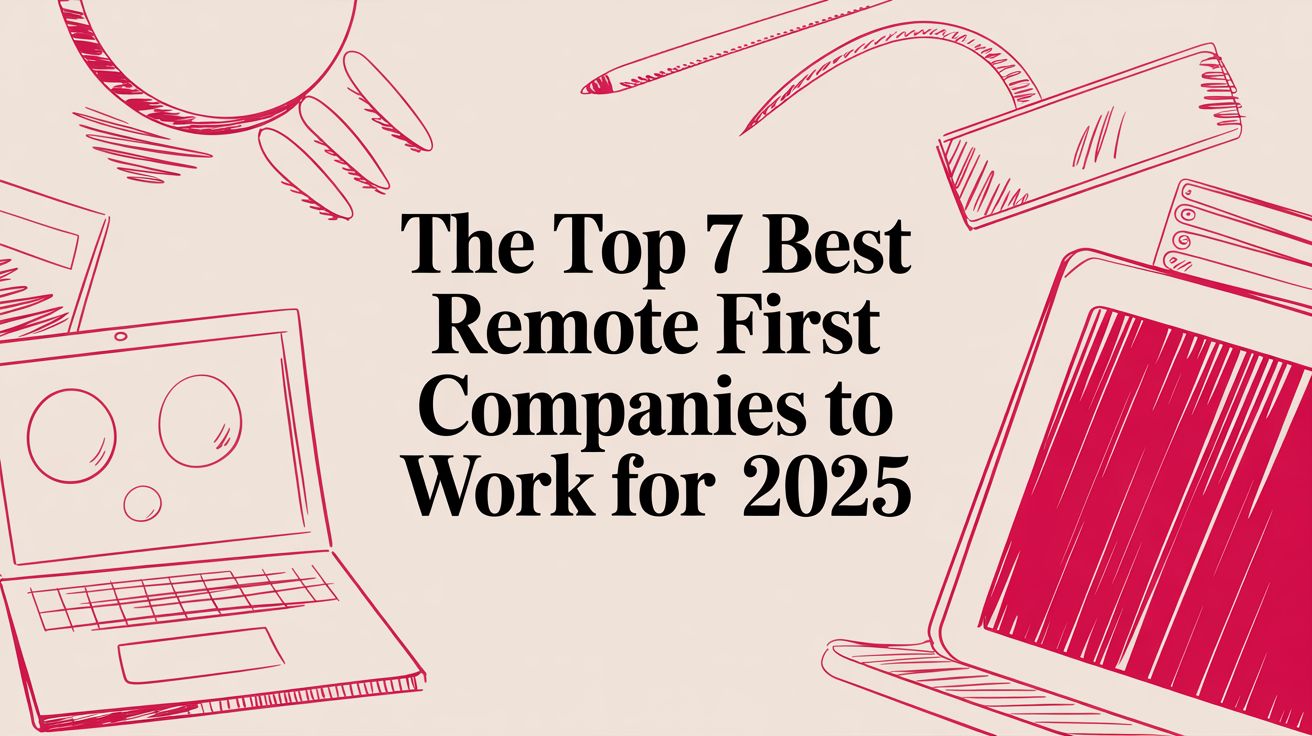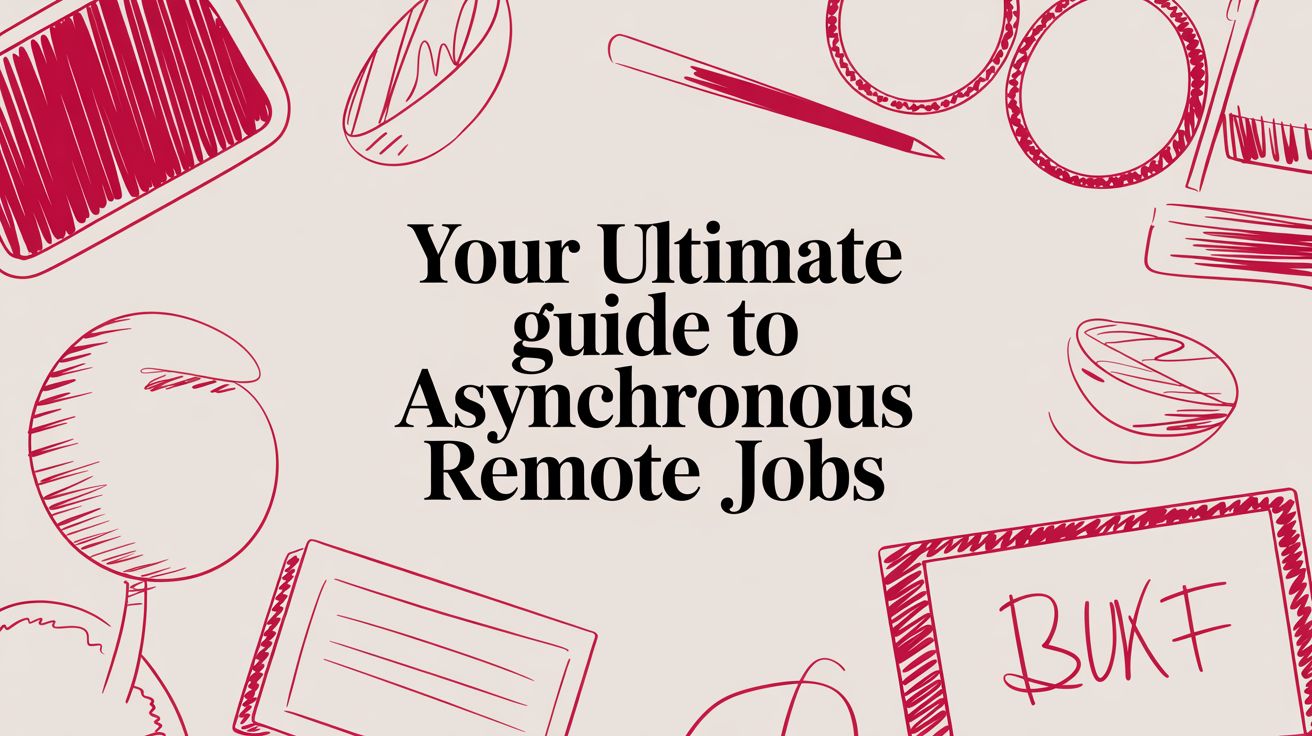7 Proven Ways to Improve Workplace Communication in 2025
Max
In today’s fast-paced, digitally-driven work environment, especially within remote and hybrid models, effective communication is the bedrock of success. It’s the difference between a team that is aligned, engaged, and innovative, and one that struggles with confusion, low morale, and missed deadlines. Miscommunication costs businesses billions annually in lost productivity, but the impact goes beyond the bottom line; it affects employee well-being and company culture.
This article moves beyond generic advice to provide a deep dive into seven powerful, actionable ways to improve workplace communication. Each strategy is designed for immediate implementation, offering practical steps, real-world examples, and fresh perspectives to help you build a more connected and transparent workplace. To truly unlock your team’s potential and foster a thriving environment, understanding and implementing effective internal communication best practices is paramount.
Whether you’re a team lead aiming to foster psychological safety or an individual contributor wanting to enhance collaboration, these proven methods will equip you to navigate the complexities of modern work. You will learn to transform how your team interacts, driving efficiency and building a stronger, more resilient culture.
1. Active Listening
Active listening is more than just hearing words; it’s a conscious effort to fully concentrate on, understand, and thoughtfully respond to what is being said. Popularized by figures like psychologist Carl Rogers and author Stephen Covey, this technique transforms communication from a one-way broadcast into a two-way dialogue, building trust and psychological safety. It’s one of the most fundamental yet powerful ways to improve workplace communication, especially in remote settings where non-verbal cues are often lost.

When you actively listen, you are not just waiting for your turn to speak. Instead, you are fully engaged with the speaker, demonstrating genuine interest through verbal and non-verbal feedback. This simple shift can drastically reduce misunderstandings, resolve conflicts faster, and foster a more innovative and collaborative environment.
Why It Works
Active listening shows respect and empathy, making colleagues feel valued and understood. This foundation of trust is critical for effective teamwork. For instance, Microsoft’s cultural turnaround under Satya Nadella heavily emphasized empathetic listening to better understand customer needs and employee feedback, directly contributing to its renewed success. Similarly, Salesforce’s V2MOM alignment framework relies on leaders actively listening to team input to set shared objectives.
Key Insight: The goal of active listening isn’t just to comprehend information but to understand the speaker’s perspective and emotions, leading to stronger professional relationships and more effective problem-solving.
How to Implement Active Listening
Integrating this practice into your daily interactions requires conscious effort. Here are some actionable steps:
- Eliminate Distractions: Put away your phone, close unnecessary tabs, and give the speaker your undivided attention.
- Practice the 80⁄20 Rule: Aim to listen 80% of the time and speak only 20%. This ensures you are absorbing more than you are broadcasting.
- Use Reflective Statements: Paraphrase what you heard to confirm your understanding. Try phrases like, “So, what I’m hearing is…” or “It sounds like you’re concerned about…”
- Ask Open-Ended Questions: Instead of questions that can be answered with a “yes” or “no,” ask questions that encourage deeper explanation, such as “Can you tell me more about that?”
- Take Notes: Jotting down key points shows you are engaged and helps you retain important details for follow-up.
By mastering this skill, you can significantly enhance clarity and connection in every conversation. For those looking to dive deeper, you can find more resources to improve communication skills at work and become a more effective team member.
2. Clear and Concise Messaging
Clear and concise messaging is the practice of communicating information in a straightforward, easily understandable manner, eliminating ambiguity and unnecessary complexity. Pioneered by figures like McKinsey’s Barbara Minto with her Pyramid Principle and championed by leaders like Jeff Bezos, this approach focuses on delivering key messages efficiently. It ensures the audience can quickly grasp and act upon the information, which is a crucial way to improve workplace communication in fast-paced environments.

In a world saturated with information, brevity and clarity are not just appreciated; they are essential for productivity. When you communicate clearly, you respect your colleagues’ time, reduce the cognitive load required to understand your point, and minimize the risk of costly misinterpretations. This fosters a culture of efficiency and decisiveness.
Why It Works
Clarity builds confidence and accelerates action. When instructions are unambiguous and updates are direct, teams can move forward without hesitation or the need for constant clarification. For instance, Amazon’s famous six-page narrative memo culture forces writers to distill complex ideas into clear, data-driven arguments, leading to more rigorous and effective decision-making. Similarly, the U.S. Military’s BLUF (Bottom Line Up Front) standard ensures the most critical information is presented first, a vital practice where clarity can be a matter of life and death.
Key Insight: Clear communication isn’t about “dumbing down” information; it’s about refining your message so that its core purpose is immediately apparent to any audience, regardless of their prior context.
How to Implement Clear and Concise Messaging
Adopting this practice requires a disciplined approach to how you structure and deliver information. Here are some actionable steps:
- Lead with the Conclusion: Apply the Pyramid Principle by starting with your main point or recommendation. Follow up with the supporting arguments and data.
- Use the BLUF Method: For emails and reports, state the “Bottom Line Up Front.” Clearly label the purpose in the subject line (e.g., “ACTION REQUIRED: Submit Q3 Report by EOD”).
- Write for Skimmability: Use short paragraphs, bullet points, and bold text to highlight key takeaways. Aim to keep emails to a single screenful to avoid overwhelming the reader.
- Cut the Jargon: Avoid acronyms and technical terms unless you are certain your entire audience understands them. When in doubt, define your terms or use simpler language.
- Test Your Message: Before sending, ask a colleague unfamiliar with the topic to read your message. If they can’t quickly summarize the main point and required action, revise it for clarity.
Mastering this skill ensures your ideas are not only heard but also understood and acted upon. For those creating specialized documents, you can find more best practices for technical writing on remotefirstjobs.com.
3. Regular One-on-One Meetings
Regular one-on-one meetings are scheduled, private conversations between a manager and a direct report. These sessions move beyond simple status updates to focus on building relationships, providing personalized feedback, discussing career development, and proactively addressing challenges. Popularized by management thought leaders like Andy Grove and Ben Horowitz, these dedicated check-ins are one of the most effective ways to improve workplace communication by creating a consistent, private channel for meaningful dialogue.

This practice ensures that every team member has a dedicated time to be heard, preventing small issues from escalating into major problems. By fostering psychological safety and individual connection, one-on-ones boost employee engagement, improve alignment with company goals, and support personal and professional growth, which is especially critical in remote or hybrid environments.
Why It Works
One-on-ones demonstrate a manager’s investment in an employee’s success and well-being, which builds trust and loyalty. For example, Google’s “Project Oxygen” research identified regular, high-quality one-on-ones as a key behavior of their most effective managers. Similarly, Adobe’s “Check-in” system replaced traditional annual reviews with frequent one-on-one conversations, leading to higher engagement and a more agile performance culture.
Key Insight: The primary purpose of a one-on-one isn’t project management; it’s about the employee. Shifting the focus from tasks to the individual’s challenges, growth, and feedback transforms the manager-employee relationship.
How to Implement Regular One-on-One Meetings
Making these meetings impactful requires structure and intention. Here are some actionable steps to get started:
- Empower the Employee: Let the direct report set the agenda and drive the conversation. This ensures the meeting addresses what’s most important to them.
- Ask Coaching Questions: Use open-ended questions like, “What’s on your mind?” or “What challenges are you facing?” to encourage reflection and problem-solving.
- Focus on Development: Dedicate time to discuss career aspirations, skill development, and future opportunities, not just current project statuses.
- Document and Follow Up: Take brief notes on key discussion points and action items. Following through on commitments shows that you are listening and value their input.
- Prioritize Consistency: Treat one-on-ones as a high-priority commitment. If you must postpone, reschedule promptly rather than canceling to reinforce the meeting’s importance.
4. Open Door Policy
An open door policy is a management practice that encourages direct, uninhibited communication by making leaders accessible to employees at all levels. Championed by influential leaders like Herb Kelleher of Southwest Airlines and Richard Branson of Virgin Group, this approach dismantles hierarchical barriers, allowing staff to share ideas, concerns, and feedback without needing formal appointments or fearing reprisal. It is one of the most effective ways to improve workplace communication by fostering transparency and psychological safety.

When executed well, an open door policy signals that leadership values every employee’s voice. This accessibility can accelerate problem-solving, surface innovative ideas from the front lines, and build a culture where individuals feel seen and heard. It transforms the traditional top-down communication model into a more dynamic and responsive network.
Why It Works
An open door policy directly builds trust by demonstrating that leaders are approachable and genuinely interested in their team’s well-being and insights. This foundation is crucial for an engaged and motivated workforce. For example, General Motors CEO Mary Barra is known for her accessible leadership style, which was critical in navigating the company through cultural and operational challenges. Similarly, Starbucks refers to its employees as “partners” and implements various programs to ensure their feedback reaches senior management, reinforcing a collaborative environment.
Key Insight: An effective open door policy isn’t just about being available; it’s about creating a system where employees feel genuinely safe and empowered to speak up, leading to faster issue resolution and a more agile organization.
How to Implement an Open Door Policy
Making this policy work requires structure and clear expectations, especially in remote or hybrid settings. Here are some actionable steps:
- Set Clear Guidelines: Define what the policy means. Communicate specific “office hours” for spontaneous conversations to balance accessibility with leaders’ needs for focused work time.
- Provide Multiple Channels: Not everyone is comfortable with face-to-face talks. Offer alternatives like dedicated Slack channels, anonymous suggestion forms, or scheduled one-on-ones.
- Train Your Managers: Equip leaders with the skills for active listening and handling sensitive or difficult conversations constructively and confidentially.
- Demonstrate Follow-Through: Act on the feedback you receive and communicate the outcomes. Closing the loop shows that speaking up leads to meaningful action.
- Promote It Actively: Regularly remind employees that the policy exists and that their participation is welcomed and valued.
Implementing this policy is a powerful step toward building trust in virtual teams and creating a more connected, communicative culture. You can discover more strategies for strengthening professional relationships on RemoteFirstJobs.com’s blog about building trust in virtual teams.
5. Constructive Feedback Culture
A constructive feedback culture is an environment that normalizes and encourages the regular exchange of specific, actionable feedback aimed at professional growth. Popularized by leaders like Kim Scott with ‘Radical Candor’ and Ray Dalio at Bridgewater Associates, this approach reframes feedback as a developmental gift rather than a personal criticism. It is one of the most transformative ways to improve workplace communication because it builds the psychological safety required for transparent, high-performance teams.
In a culture of constructive feedback, communication is direct, honest, and frequent, moving beyond the dreaded annual review. This continuous loop of communication helps employees understand their impact, align with company goals, and identify blind spots in their performance, ultimately accelerating both individual and organizational growth.
Why It Works
This culture directly tackles the fear and awkwardness often associated with giving and receiving feedback. When feedback is routine, specific, and delivered with care, it loses its negative charge and becomes a tool for improvement. For example, Netflix’s well-known culture of radical honesty, including its “keeper test,” encourages candid conversations to maintain a high-performance standard. Similarly, Adobe replaced its annual performance reviews with a more fluid, real-time feedback system called “Check-in,” leading to higher employee engagement and lower voluntary turnover.
Key Insight: A strong feedback culture shifts the focus from judging past performance to improving future outcomes. It makes communication a tool for continuous development, not just occasional evaluation.
How to Implement a Constructive Feedback Culture
Building this culture requires intentional effort and clear guidelines. Here are some actionable steps to get started:
- Train Your Team: Teach employees a simple, objective framework like the Situation-Behavior-Impact (SBI) model to structure their feedback. This focuses on observable facts, not personal opinions.
- Focus on Behavior, Not Personality: Frame feedback around specific actions and their consequences. Instead of saying “You are disorganized,” try “When your reports are late, it delays the team’s progress.”
- Encourage Peer-to-Peer Feedback: Create channels and opportunities for colleagues to share feedback with each other, not just in a top-down manner. This democratizes communication and builds team accountability.
- Ask for Permission: Start a feedback conversation by asking, “Is now a good time to share some observations about the project?” This gives the receiver a sense of control and prepares them to listen.
- Model the Behavior: Leaders must actively and openly ask for feedback on their own performance to show that it is a safe and valued practice for everyone.
By embedding these practices, you can create a workplace where clear, helpful communication is the norm. For team members wanting to take the initiative, it’s also crucial to learn how to ask for feedback at work effectively to drive your own professional development.
6. Multiple Communication Channels
Relying on a single communication method, like email, is no longer sufficient in the modern workplace. A strategic approach that utilizes multiple communication channels ensures information is delivered effectively, regardless of its urgency, audience, or context. This system, popularized by media theorist Marshall McLuhan and now championed by companies like Slack and Microsoft, recognizes that the medium is as important as the message. It’s one of the most vital ways to improve workplace communication, especially in hybrid and remote environments where teams are geographically dispersed.
When you adopt a multi-channel strategy, you create a flexible and resilient communication ecosystem. Urgent alerts might go through a dedicated messaging app, while detailed project updates are shared in a collaborative document, and company-wide announcements are delivered via video conference and an email newsletter. This layered approach prevents information overload and ensures critical messages cut through the noise.
Why It Works
Using the right channel for the right message increases clarity and engagement. It respects employees’ time and attention by matching the communication method to the information’s importance. For example, Walmart effectively reaches its vast retail workforce using a mix of its Me@Walmart app for daily tasks, in-store digital displays for announcements, and traditional in-person huddles. Similarly, IBM’s use of an internal social networking platform alongside email and video calls allows for both formal and informal knowledge sharing across its global teams.
Key Insight: A multi-channel strategy isn’t about using more tools; it’s about using the right tools intentionally to improve message reception, reduce response delays, and cater to different communication preferences.
How to Implement Multiple Communication Channels
Building an effective multi-channel system requires clear guidelines and thoughtful planning. Here are actionable steps to get started:
- Create a Communication Charter: Develop a document that clearly defines which channel to use for specific types of communication (e.g., Slack for quick questions, email for formal updates, project management tools for task assignments).
- Use Urgent Channels Sparingly: Reserve channels like phone calls or high-priority notifications for true emergencies. Overusing them will lead to them being ignored.
- Train Employees: Ensure everyone understands the purpose of each platform and how to use it effectively. Provide training sessions and accessible documentation.
- Cross-Post Critical Information: For major announcements, communicate the message across multiple primary channels (e.g., all-hands meeting, email, and intranet post) to maximize reach.
- Regularly Evaluate Effectiveness: Survey your team to see which channels are working and which are not. Be prepared to adapt your strategy based on feedback and evolving needs.
By thoughtfully selecting your communication methods, you can build a more efficient and connected workplace. To explore the technology that powers this approach, you can learn more about the best remote collaboration tools and find the right fit for your team.
7. Non-Verbal Communication Awareness
Non-verbal communication awareness is the conscious recognition and skillful use of body language, facial expressions, and tone of voice. Research by figures like Albert Mehrabian suggests these non-verbal signals can account for a significant portion of a message’s impact. Mastering this awareness ensures your unspoken cues align with your verbal content, dramatically improving communication effectiveness, especially in video-centric remote work.
When you are mindful of non-verbal cues, you can project confidence, build rapport, and interpret the true feelings behind a colleague’s words. This skill, championed by experts like former FBI agent Joe Navarro, transforms conversations by adding a layer of unspoken understanding that prevents misinterpretation and fosters deeper connections.
Why It Works
Paying attention to non-verbal signals builds trust and psychological safety by showing you are engaged and empathetic. This is a critical way to improve workplace communication, as it helps decode the subtext in interactions. For instance, sales training at companies like Xerox has long included non-verbal communication to help reps build rapport and understand client objections. Similarly, Disney’s legendary customer service training heavily emphasizes body language to create welcoming and positive guest experiences.
Key Insight: Your body language and tone often convey more than your words. Aligning your non-verbal signals with your message ensures clarity, builds trust, and makes your communication more persuasive and authentic.
How to Implement Non-Verbal Communication Awareness
Becoming more attuned to these signals requires practice and self-awareness. Here are actionable steps to integrate this into your daily work:
- Mind Your Posture: Sit up straight and use open gestures to project confidence and approachability. Consider “power posing,” as researched by Amy Cuddy, before an important meeting to boost your self-assurance.
- Maintain Appropriate Eye Contact: Aim to hold eye contact for 50-70% of the time during video calls to show you are engaged and listening.
- Mirror Subtly: To build rapport, subtly mirror the posture or gestures of the person you are speaking with. This psychological technique can create a sense of connection.
- Monitor Your Tone: On calls without video, your tone of voice is paramount. Vary your pitch and pace to convey enthusiasm and avoid a monotone delivery that can be perceived as disinterest.
- Record Yourself: To identify and correct distracting habits like fidgeting or using filler words, record yourself during a practice presentation and review the footage.
7 Ways to Improve Workplace Communication Comparison
| Communication Method | Implementation Complexity 🔄 | Resource Requirements ⚡ | Expected Outcomes 📊 | Ideal Use Cases 💡 | Key Advantages ⭐ |
|---|---|---|---|---|---|
| Active Listening | Medium - requires consistent practice and mental focus | Moderate - time investment per conversation | Improved trust, reduced conflicts, better problem-solving | One-on-one or small group discussions, conflict resolution | Builds rapport, inclusive environment, reduces misunderstandings |
| Clear and Concise Messaging | Low to Medium - skill needed to balance brevity and clarity | Low - mainly skill development | Faster decision-making, reduced errors, increased productivity | Written communication, presentations, emails | Efficient, minimizes follow-up, enhances credibility |
| Regular One-on-One Meetings | Medium to High - scheduling and manager training needed | High - dedicated manager time | Strong relationships, early problem detection, higher retention | Employee development, feedback, career discussions | Strengthens bonds, supports growth, psychological safety |
| Open Door Policy | Medium - cultural change and manager responsiveness required | Moderate - ongoing manager availability | Greater transparency, morale boost, early issue detection | Leadership accessibility, openness to feedback | Enhances trust, direct communication, morale increase |
| Constructive Feedback Culture | High - requires cultural change and training investment | High - continuous training needed | Accelerated growth, improved relationships, learning culture | Performance improvement, organizational development | Honest communication, early intervention, engagement |
| Multiple Communication Channels | Medium to High - platform management and training needed | High - multiple platforms and maintenance | Broad reach, accommodates preferences, reduces info gaps | Large or remote teams needing varied communication | Accessibility, redundancy, engagement increase |
| Non-Verbal Communication Awareness | Medium - ongoing self-awareness and cultural learning | Low to Moderate - training and practice | Enhanced clarity, rapport, emotional intelligence | Face-to-face or video communication, leadership presence | Builds trust, improves influence, reduces misunderstandings |
From Theory to Practice: Embedding Communication Excellence into Your Daily Workflow
Navigating the complexities of the modern workplace requires more than just innovative tools and strategies; it demands a fundamental commitment to exceptional communication. Throughout this guide, we’ve explored seven powerful ways to improve workplace communication, moving beyond generic advice to offer a practical roadmap for tangible change. From the focused engagement of active listening and the precision of clear, concise messaging to the structured intimacy of regular one-on-one meetings, each strategy serves as a critical building block for a more connected and collaborative environment.
The journey doesn’t end with a single initiative. Fostering a genuine open-door policy, cultivating a culture of constructive feedback, strategically leveraging multiple communication channels, and developing a keen awareness of non-verbal cues are all interconnected elements. Together, they form a robust framework that dismantles silos, mitigates misunderstandings, and builds the psychological safety necessary for teams to thrive, especially in remote and hybrid settings. The true power lies not in mastering one area, but in weaving these principles into the very fabric of your team’s daily interactions.
Turning Insight into Action
Transforming communication culture is a marathon, not a sprint. The key to sustainable improvement is intentional, incremental implementation. Instead of attempting a complete overhaul overnight, focus on a phased approach that builds momentum and ensures new habits stick.
Here are your immediate next steps:
- Select a Starting Point: Choose one or two strategies that address your team’s most pressing communication challenges. Is clarity an issue? Start with clear and concise messaging protocols. Do team members feel disconnected? Prioritize regular one-on-one meetings.
- Establish a Baseline: Before you begin, take a moment to assess your current state. A simple team survey or an open discussion in a team meeting can help you understand existing pain points and set a benchmark for measuring progress.
- Document and Share: True cultural change requires shared understanding and easy access to information. To fully embed communication excellence, consider adopting proven knowledge management strategies that ensure critical information, process documents, and communication guidelines are always accessible and easily shared across your team. This creates a single source of truth that reinforces best practices.
The Lasting Impact of Great Communication
Mastering these ways to improve workplace communication is not merely about increasing efficiency or reducing conflict. It’s about unlocking your team’s full potential. When communication flows freely and effectively, innovation flourishes, engagement deepens, and a resilient, adaptable culture takes root. You create an environment where every individual feels heard, valued, and empowered to contribute their best work. This is the ultimate competitive advantage in a world where talent and collaboration define success. By committing to this continuous practice, you are not just improving processes; you are investing in your people and building a foundation for long-term organizational health and achievement.
Ready to find a company that already values the communication principles you’ve just learned? Explore opportunities on Remote First Jobs, a platform dedicated to connecting skilled professionals with forward-thinking organizations that prioritize a healthy, communicative, and effective remote culture. Find your next role at a company that gets it. Visit Remote First Jobs today!


